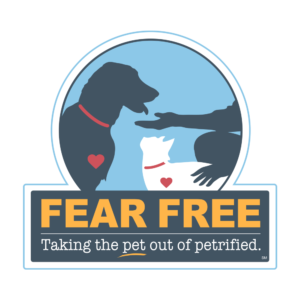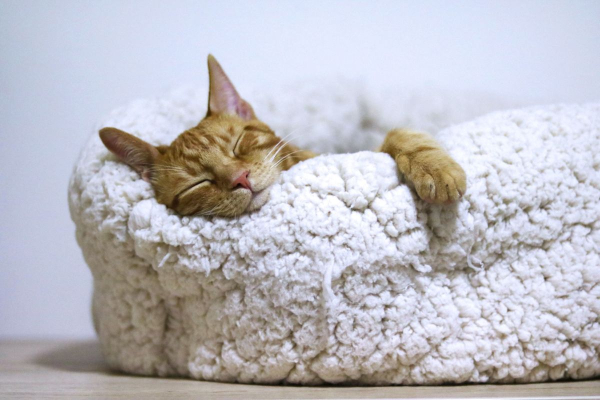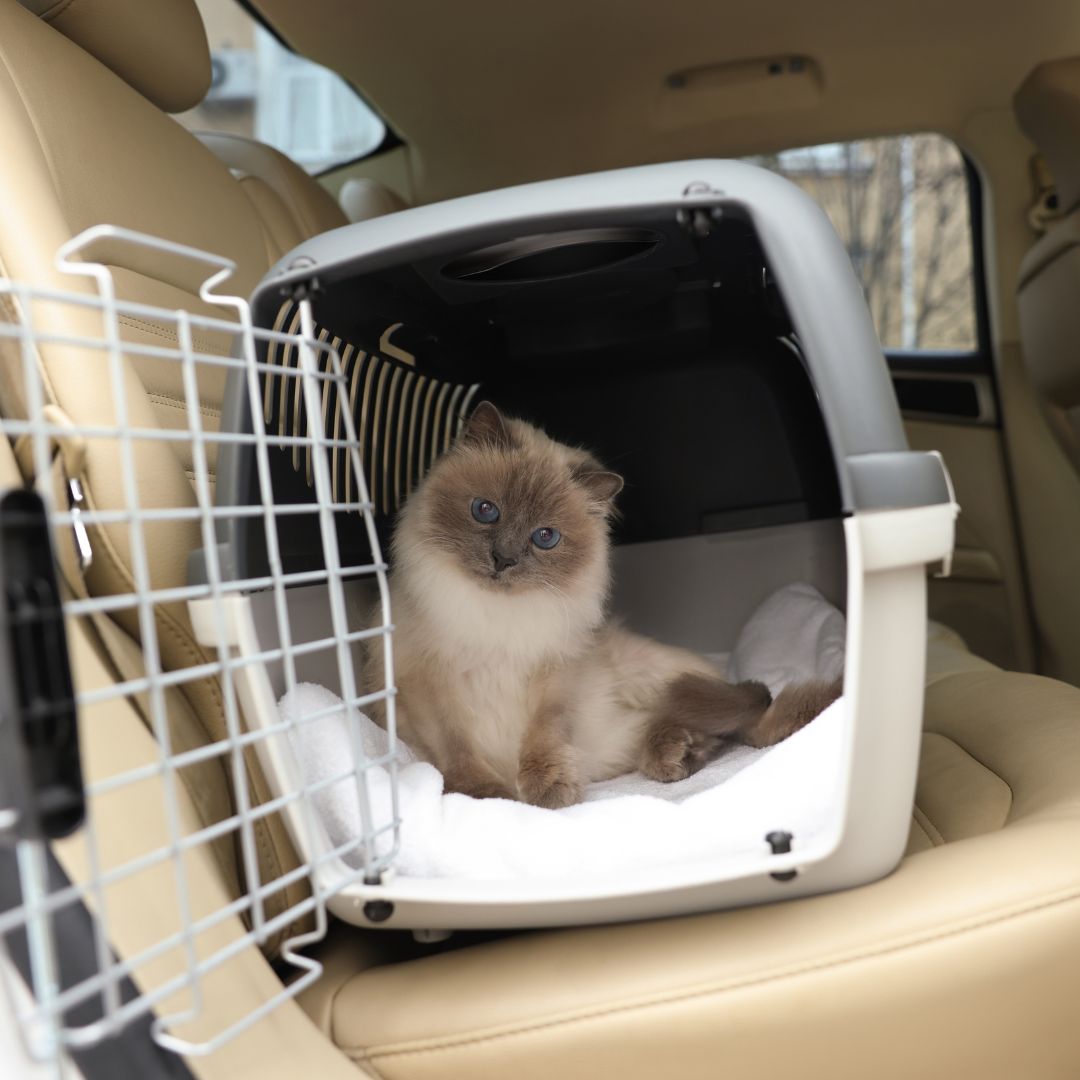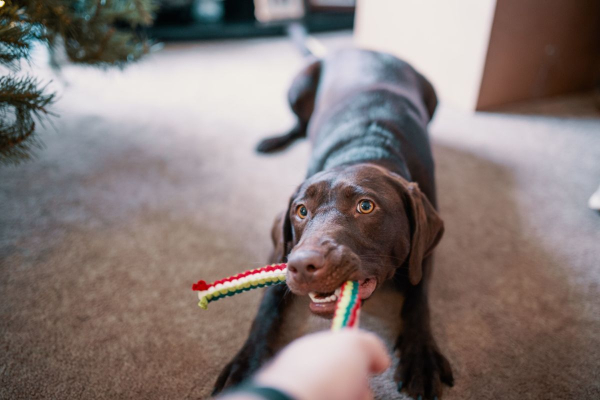By Hannah Feinsilber
Intern at Atlantic Veterinary Hospital
It’s not a surprise that some dogs and cats dislike vet visits. The different sounds and smells, as well as getting poked and prodded, can upset their routine of playing, sleeping, and eating.

Our Pets Are Just Like Us
The way some humans think about dental visits – or even yearly doctor check-ups – is similar to the way some pets think about vet visits: uncomfortable, stressful, but unquestionably necessary. Pet owners know that annual checkups and vaccinations are crucial to their pet’s long-term health, yet some dread the anxiety-laden trip that comes with it.
According to The American Veterinary Medical Association:
“Thirty-eight percent of dogs and 58 percent of cats are fearful of vet visits, even more fearful than kids are of going to the dentist. Even 38 percent of cat owners and 26 percent of dog owners are stressed just thinking about it.”
Twenty-eight percent of cat owners and 22 percent of dog owners would visit the veterinarian more frequently if it wasn’t so stressful for the owner and/or the pet.
Fear Free Takes the “Pet” Out of “Petrified”
 Fear Free is an organization that helps alleviate fear, anxiety, and stress in pets by inspiring and educating the people who care for them. Fear Free provides online and in-person education to pet owners, veterinary professionals, and the pet professional community. There is so much YOU can do to help your pet(s) have the safest and most productive vet visit EVERY. SINGLE. TIME.
Fear Free is an organization that helps alleviate fear, anxiety, and stress in pets by inspiring and educating the people who care for them. Fear Free provides online and in-person education to pet owners, veterinary professionals, and the pet professional community. There is so much YOU can do to help your pet(s) have the safest and most productive vet visit EVERY. SINGLE. TIME.
Why You Should Care
Veterinarians and pet owners take the physical health of pets very seriously, yet the pet’s mental health is sometimes overlooked. Reducing anxiety, stress, and fear in cats and dogs will significantly reduce their sensitivity to pain, and create a safer and more productive visit for everyone involved.
Fear vs. Anxiety
Fear and anxiety are two different problems, and can be often reduced in quick and easy ways. Fear is the instinctual feeling of apprehension resulting from a situation, person, or object presenting an external threat – whether real or perceived. Anxiety is the anticipation of future dangers from unknown or imagined origins that result in physiologic reactions.
Be Educated in Fear Free Practices
In order to provide pets with long, happy, healthy lives, regular visits to your veterinarian for both preventive and acute care are crucial. By becoming educated in Fear Free techniques, you can help to brighten and enrich your pet’s life to the fullest.
Veterinary visits are a crucial part of Fear Free Happy Homes. Reducing the anxiety, fear, stress, and pain sensitivity for the pets we care about will create a more productive and safe environment for everybody involved – pets, pet owners, and veterinary professionals.
Here are 12 easy steps you can take that will make a huge difference in the long-term health of your pet:
For Cats

Be Prepared
Do not wait until the day of or the day before to prepare for your cat’s visit.
After working on creating positive associations with various predictable aspects of the vet visit, like getting in the crate, riding in the car, and being handled by new people, if your cat still seems anxious about the visit, talk to your vet about other methods for soothing them.
For example, pheromones, supplements, or medications may help to manage your cat’s fear, anxiety, and stress. Additionally, before you take your cat to the vet, work with your veterinary team to discuss your cat’s emotional health during their visit, and patterns you have observed at home. Little changes, such as waiting in your temperature-controlled car until an exam room is ready, can make a huge impact on your cat’s mental health and reduce their anxiety and stress levels.
Create a Safe Carrier
Get your cat accustomed to being comfortable in her carrier.
If the only time your cat gets in her carrier is when going to the vet, chances are she will fear and reject it. Instead, try creating a link between the carrier and safe and happy feelings by incorporating her carrier into her daily life.
Use the carrier as a place for your cat to sleep or eat, as well as rewarding her with treats once inside.
Additionally, try leaving her carrier open throughout the day, incorporating it into playtime with feline friends.

Provide a Comfortable and Safe Car Ride
Try spraying Feliway® (a pheromone that has a calming effect on cats) in your car’s interior 30-60 minutes before you will leave for the vet visit. This spray will reduce your cat’s anxiety and stress, making kitty more calm once he heads in for his appointment.
During the drive, try to avoid sudden braking, stopping, acceleration, or sharp and fast turns.
Tuning the radio to a soothing channel like classical music can also calm your cat, causing a more relaxed visit.
Finally, once you arrive at the vet, make sure you have brought a blanket or large towel to cover the carrier to reduce visual stimulation of seeing other pets.
Manage the Waiting Room
Some veterinary waiting rooms can be a scary place for your cat, especially when shared with other anxious, loud, and unhappy pets who aren’t thrilled to be there either. In an ideal world, your cat should be able to be moved to the exam room right upon arrival; ask the front desk whether this is possible.
To make the waiting room experience more tolerable, try positioning the carrier so that it faces the back of a wall, chair, or couch.
Additionally, cover the carrier with a towel and stay with your kitty – reassure by talking to them and letting them smell your fingers. If possible, seek out a place to sit that is animal-free.
Timing is also very important, too. Be on time. Do not arrive too early, and do not arrive late. Waiting a long time for the vet can cause a buildup of stress, anxiety, and fear that will not make the vet visit as easy and productive as it could be.
Consider Anti-Anxiety Medications
If your cat still has an anxious mind, your vet can prescribe or suggest prescription medication or over-the-counter remedies that can help take the edge off during the vet visit. Talk to your vet for specific recommendations.
Implement Regular “Happy Visits”
Cat’s visits to the vet shouldn’t just be limited to when they are hurt, sick, or need vaccinations.
The more familiar they become with the environment of the vet, the more comfortable they will feel going to the vet.
Even just popping in occasionally for a reward of treats and a friendly hello from the veterinary staff can make your cat feel more safe and relaxed at the vet.
For Dogs:

Bring Toys
Does your dog get stressed out by unfamiliar or presumed unsafe environments? Like the cartoon character Linus’s famous blanket, some dogs benefit from bringing their favorite toy to provide a familiar scent and a dose of comfort at the vet’s office.
Implement “Happy Visits”
Taking your dog to the vet clinic even if they do not have a scheduled appointment can make them less fearful, stressed, and more comfortable with the veterinary environment. Many veterinary clinics encourage “happy visits” where the staff will pet your dog and feed him treats. As a result, this can make your dog feel more relaxed at their vet visits.
Arrive Hungry
You may be thinking, “Why would I ever want my dog to be hungry?” Arriving at the vet visit with a hungry dog can encourage them to take treats for good behavior, which has been scientifically shown to decrease anxiety, fear, and stress.
Bring their favorite treats from home if you are not sure if they are going to like the vet treats.
Take Joy Rides
Does your dog associate car rides with going to the vet? If yes, after they are finished with their visit, take your dog on a car ride that ends with a treat or a stroll in the park. As a result, your dog will not associate the car with only vet appointments.
Medications from your vet to treat car-sickness for your pet is also a great option, and is highly advised if applicable. Additionally, it is unsafe for your dog to be in the front seat of the car due to possible inflation of airbags, so put them in the back for optimal safety.

Create a Safe Crate
Crates can be a scary place for some dogs, increasing their anxiety, stress, and fear levels when placed inside of it before the appointment. Try to avoid taking out the crate only when going to the vet. Alternatively, at home, leave it out as a safe place for your dog to sleep or eat in, instead of an unsafe/negative environment.
Most veterinarians recommend crate training when your dog is a puppy as well to make this process easier. As a result, your dog will hopefully go inside when you need them to, will not associate the crate with only going to the vet, and will feel safe and secure.
Make a Difference
Reading body language for detailed cues, playing specific music, and providing short-acting anti-anxiety medication are just three examples of the many ways to reduce anxiety, stress, and fear in the pets we love.
The emotional and physical health of the ones we care the most about is the #1 priority, and each of us can play a vital role in in helping vet visits become Fear Free.


